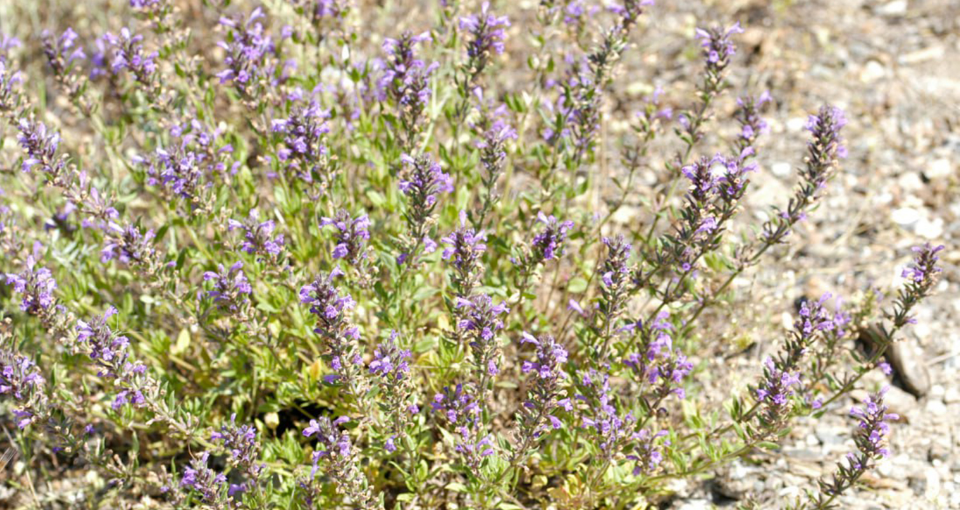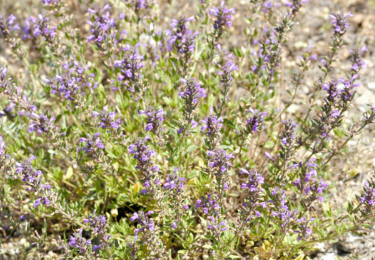
Watchlist
You can print out your watchlist and use it as a reminder for your purchase in the pharmacy.
Your watchlist currently contains no products.
Print


Mountain mint
Mountain mint
Botanik
The mountain mint (Acinos suaveolens (Sm.) G. Don; synonyms: Acinos offinalis, Calamintha suaveolens (Sm.) Boiss.; Clinopodium suaveolens (Sm.) Kuntze) from the genus Acinos Miller (synonyms: Calamintha Miller; Clinopodium Miller) and family Lamiaceae (labiates) is a herbaceous plant. It is only rarely found as a semi-shrub.
It is characterized by the following botanical features: Flowers in axillary opposite, mostly stalked cymene; cylindrical, more or less two-lipped calyxes, the upper lip being shorter than the lower; large corolla; hairy throat; style with mostly unequal branches. Mountain mint is mainly found in Europe, but also in Asia. It is also referred to in the literature as "fragrant stonecrop" (Clinopodium suaveolens).
mehr
Geschichte
The mountain mint (Acinos suaveolens (Sm.) G. Don) is only known as a medicinal plant from Greece and the northern Greek city of Thessaloniki. Thessaloniki is the second largest city in Greece and, with an age of around 2300 years, one of the oldest in Europe (2300 years). Thessaloniki is also home to one of the oldest markets in the eastern Mediterranean region with links to the ethnobotanical tradition. Many "mints" are traded here, including the mountain mint contained in Kalimentha®. Traditionally, mountain mint is used as a decoction or tea preparation (infusion) both internally and externally in the form of ablutions.
The name Kalimentha® (also: Kalaminthi; ΚΑΛΑΜΙΝΘΗ) is made up of the two Greek words Kali ("good") and Minthi ("mint") - "the good mint".
mehr
Inhaltsstoffe
The essential oil and flavonoids (a group of polyphenols) are among the most valuable constituents of mountain mint. Like many other plants, "mints" exhibit a high degree of variability with regard to the composition of the essential oil (so-called "chemotypes"). The genus Acinos Miller is said to have a pungent taste, which suggests a comparatively high content of pulegone, a monocyclic monoterpene ketone with an odor reminiscent of peppermint and camphor. However, the pulegone content in mountain mint essential oil varies greatly (between approx. 23 - 81 %). Other ingredients of the essential oil are iso-pulegone, menthone and iso-menthone as well as limonene. The essential oil is largely responsible for the taste of mountain mint tea.
Mountain mint is also rich in flavonoids, including quercetin, luteolin and apigenin derivatives.
mehr
Produkte mit Mountain mint
Kalimentha® Bio Bergminze Tee
New in your pharmacy!
